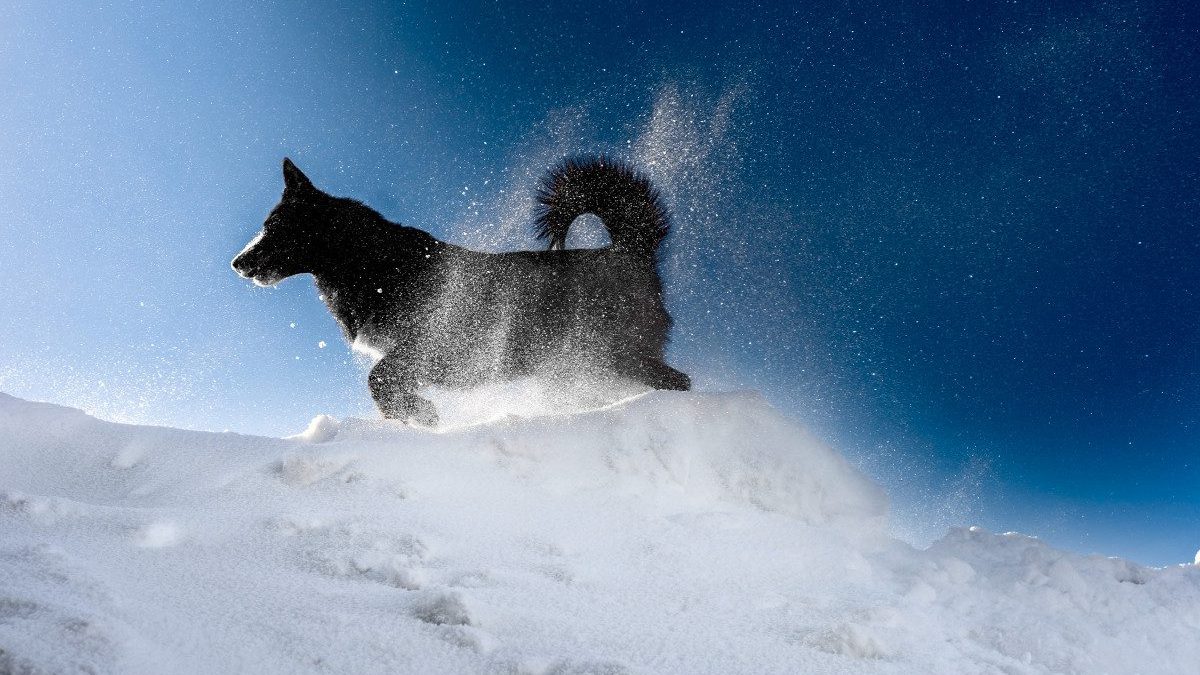Outside activities help keep dogs happy and healthy. But the colder temperatures typical in the winter months affect many dog breeds. Your dog may fall into one of the breed categories that are especially sensitive to cold. Please find out how cold is too cold for your dog so they can enjoy winter safely.
Walking, running, and chasing furry friends outside are great activities for a dog’s physical and mental health. But the risks of being in cold weather can outweigh the benefits. Pets can safely enjoy the outdoors as long it’s not too cold and they have protection.
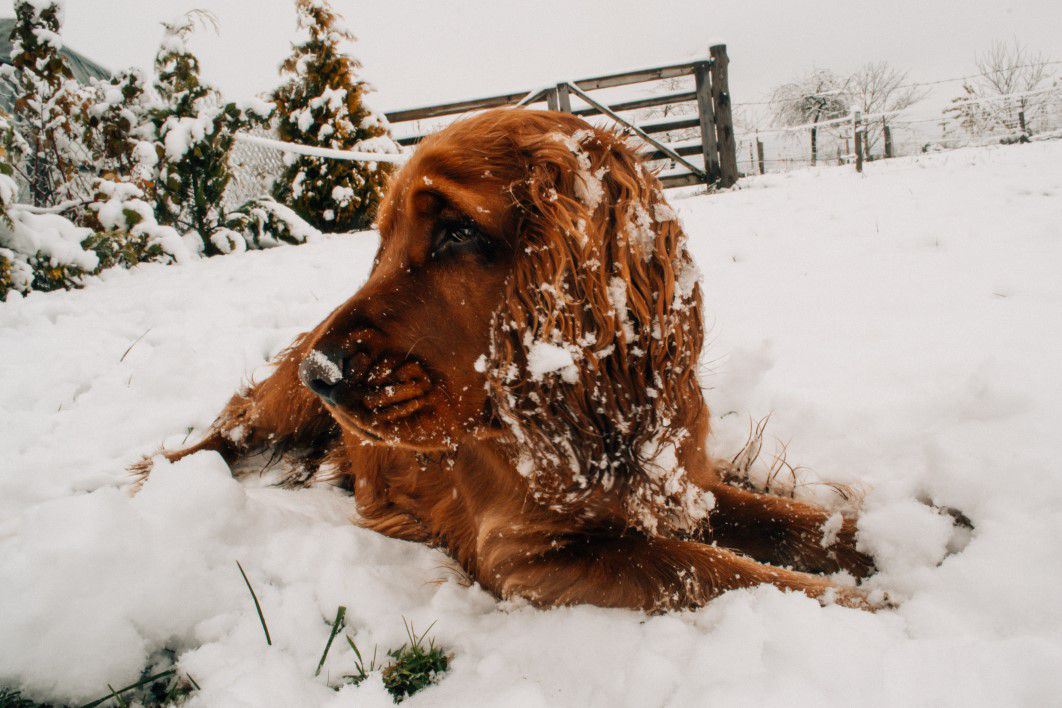
Learn about the potential risks of low temperatures and how to best take care of your pets during the cold season!
The Dangers of Cold Temperatures
Generally, most dogs will become uncomfortable at 45°F (7°C). Small, thin-coated, young, old, and sick dogs should not be left outside for long at 32°F (0°C) and below. Dogs become vulnerable to hypothermia and frostbite at 20°F (-7°C) and below.
Dogs can become sick or develop signs of hypothermia and frostbite in cold climates. The following are some signs and dog behaviors that they may be too cold include the following:
· Shivering
· Whining
· Holding up paws
· Slowing down
· Acting anxious
· Searching for warmth
· Confusion or stumbling
· Sluggishness or lethargy
· Low heart or breathing rates
· Pale or cold body parts, including pale gums
The dangers associated with cold weather differ by canine breed and specific pet. One dog’s brisk evening stroll is another’s walk into frostbite.
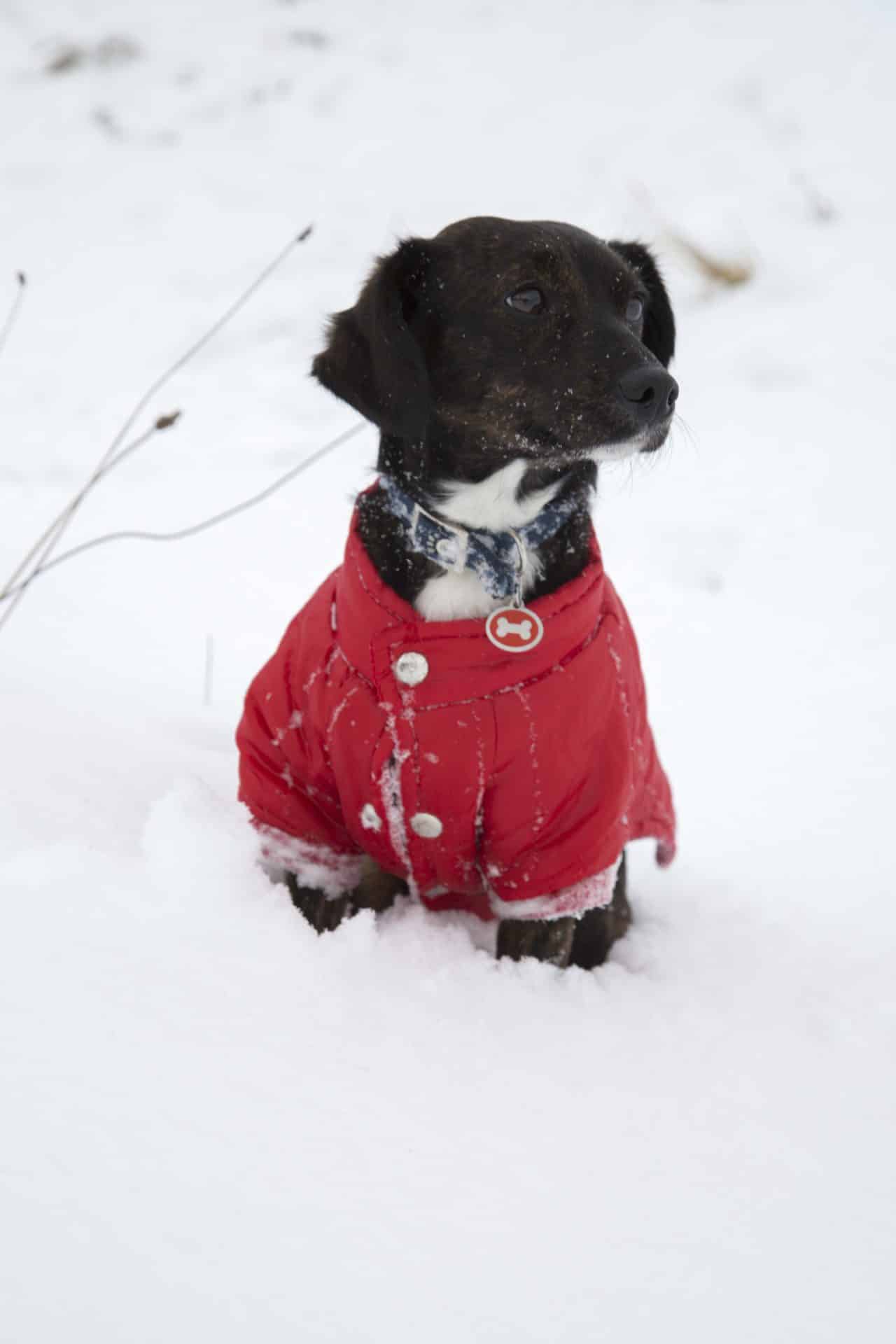
Pets can safely enjoy the outdoors as long it’s not too cold and they have protection.
Temperature Tolerance by Coat Type & Color
Breeds with double-layered or thick coats tend to be the most cold-tolerant. Many of these thick-coated dogs have traits that help them thrive when it’s cold because they originate from northern areas. Some of these breeds include:
· Alaskan Malamutes
· Siberian Huskies
· Newfoundlands
· Samoyeds
· Bernese Mountain Dogs
However, dogs with thin coats can suffer in the cold. Short-haired dogs tend to fair better in warmer climates. Breeds with thin coats – like Chihuahuas, Basenjis, and Greyhounds – and dogs with special conditions like alopecia should be inside when the temperature drops.
Dark coats help dogs absorb heat from sunlight on clear days. Dogs with black, brown, and dark coats can keep warm compared to dogs with light coats.
How Your Dog’s Size Sways Cold Acceptance
Small dogs get colder faster than large dogs. Canines lose most of their heat through their skin. Compared to big dogs, smaller breeds have more surface to lose heat but a smaller volume inside to hold on to heat.
Likewise, thin dogs become cold more quickly. Fat is a great insulator, and smaller dogs have less body fat to protect them. But don’t let your dog pack on weight to prepare for the cold, as the health risks of being overweight far outweigh any benefits.
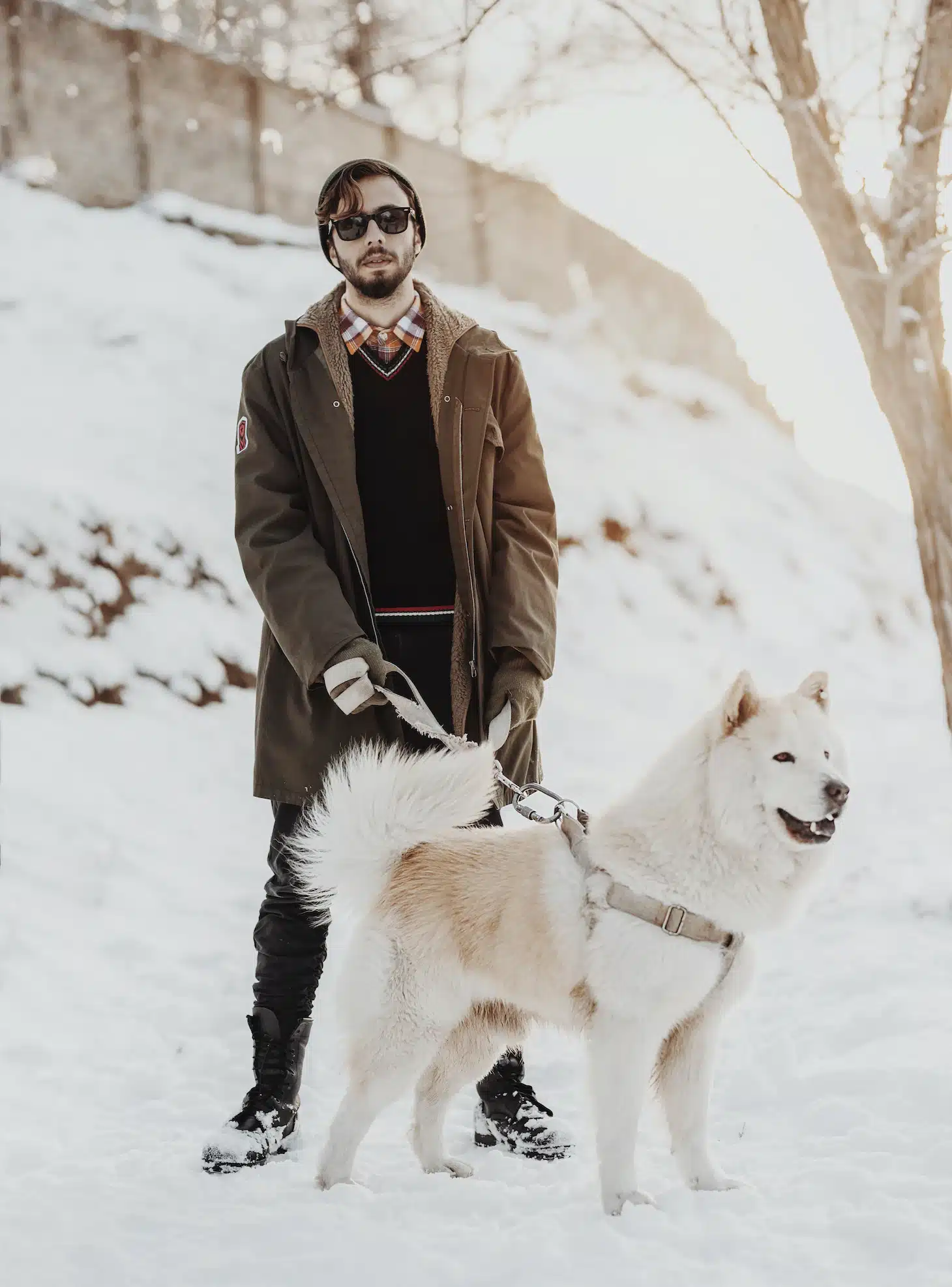
Dogs can become sick or develop signs of hypothermia and frostbite in cold climates.
Age & Health Affects Your Dog’s Ability to Handle Winter Weather
Puppies, senior dogs, and dogs with health conditions cannot regulate their body temperatures as well as healthy adult dogs. It would be best if you protected vulnerable dogs from the cold.
However, all dogs’ unprotected paw pads, noses, ears, and stomach regions are susceptible to the cold.
Activity & Environmental Conditioning Influences
Running and playing generate body heat. Your pooch may stay warmer if they remain active while outside.
Your dog may handle the cold better if they’re used to it. Pets that are out of their element – such as vacationing canines – may not handle the cold if they’re typically in warm climates. Similarly, changing weather can take time for your pet to acclimate to. And your dog may not be ready for a sudden weather difference.
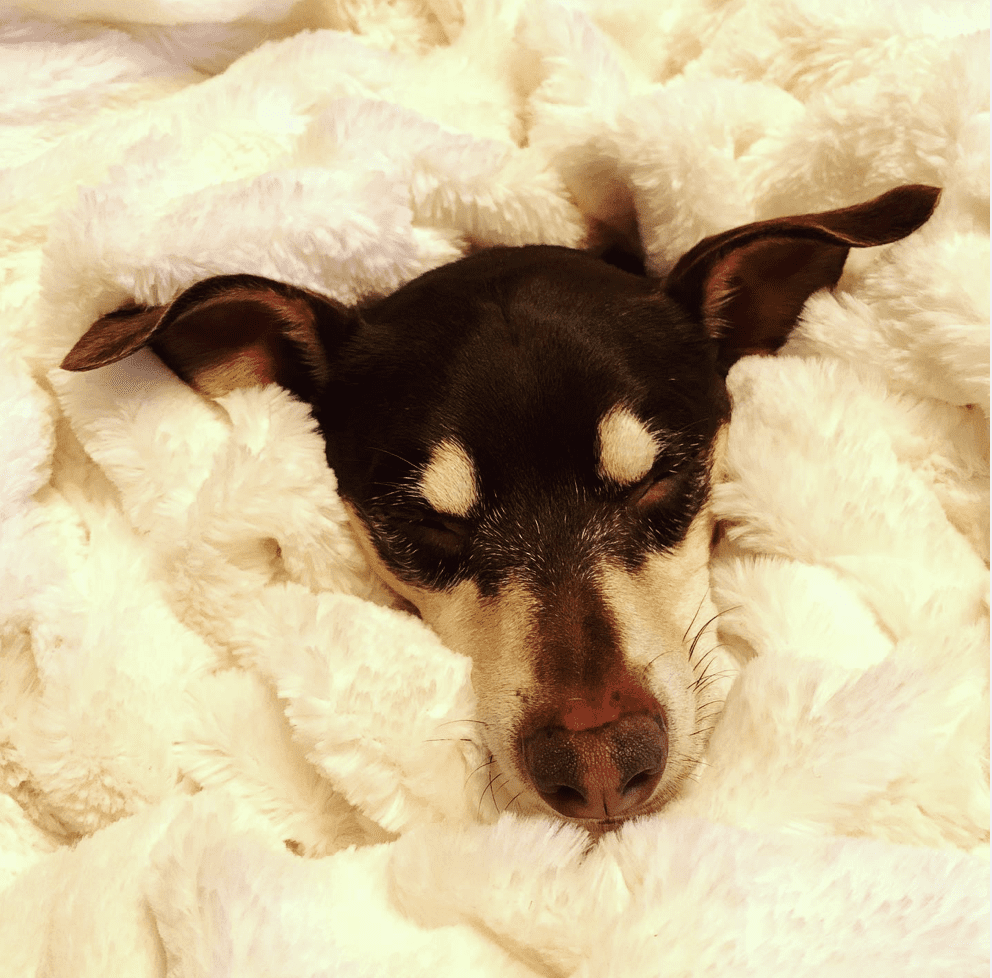
A doggie bed and blanket can keep them warmer in the winter.
Look at More Than the Temperature
Wind chill lowers a dog’s body temperature. An abrupt gust of wind can cut through your dog’s coat and make them feel colder than the thermometer says. Cloud cover also feels colder than sunny days since pets cannot soak up the sun’s warming rays.
Rain, snow, and even heavy fog wet dogs’ fur and reduce their body temperature. Your pet needs to stay dry in cold weather.
Tips to Keep Your Dog Warm in Winter
1. Always know where your pet is. You can best keep your dog safe inside or outside by ensuring they are warm enough.
2. Limit their time outside in the cold season. Take shorter walks and keep them active and moving while outside. Small, thin-coat, and older dogs should be kept inside except for potty breaks.
3. Keep your dogs active. Even if they spend less time outside, your dog’s energy level should remain the same as during the warmer seasons. Fun indoor activities like playing fetch down the hall or tug-of-war can help them keep moving when it’s cold.
4. Dress them for the weather. A waterproof jacket and dog booties can keep your pet warmer when they need to go outside in bad weather.
5. Dry and warm them up after being outside. Wet dogs can stay colder for longer, even while inside. Dog sweaters and blankets can be an excellent way to get warm after being outside.
6. Make sure they have a warm place to sleep. Although they may be used to snoozing on the bare floor, it might be a much colder place in the winter. Most households lower the temperature in the evening before bed. A doggie bed and blanket can keep them warm in the cold weather.
7. Look for signs of a cold, such as a runny nose, sneezing, fever, and watery eyes. The cold can also cause the flu, bronchitis, or distemper.
Check out our additional tips for keeping dogs healthy and safe during winter from the American Kennel Club here.
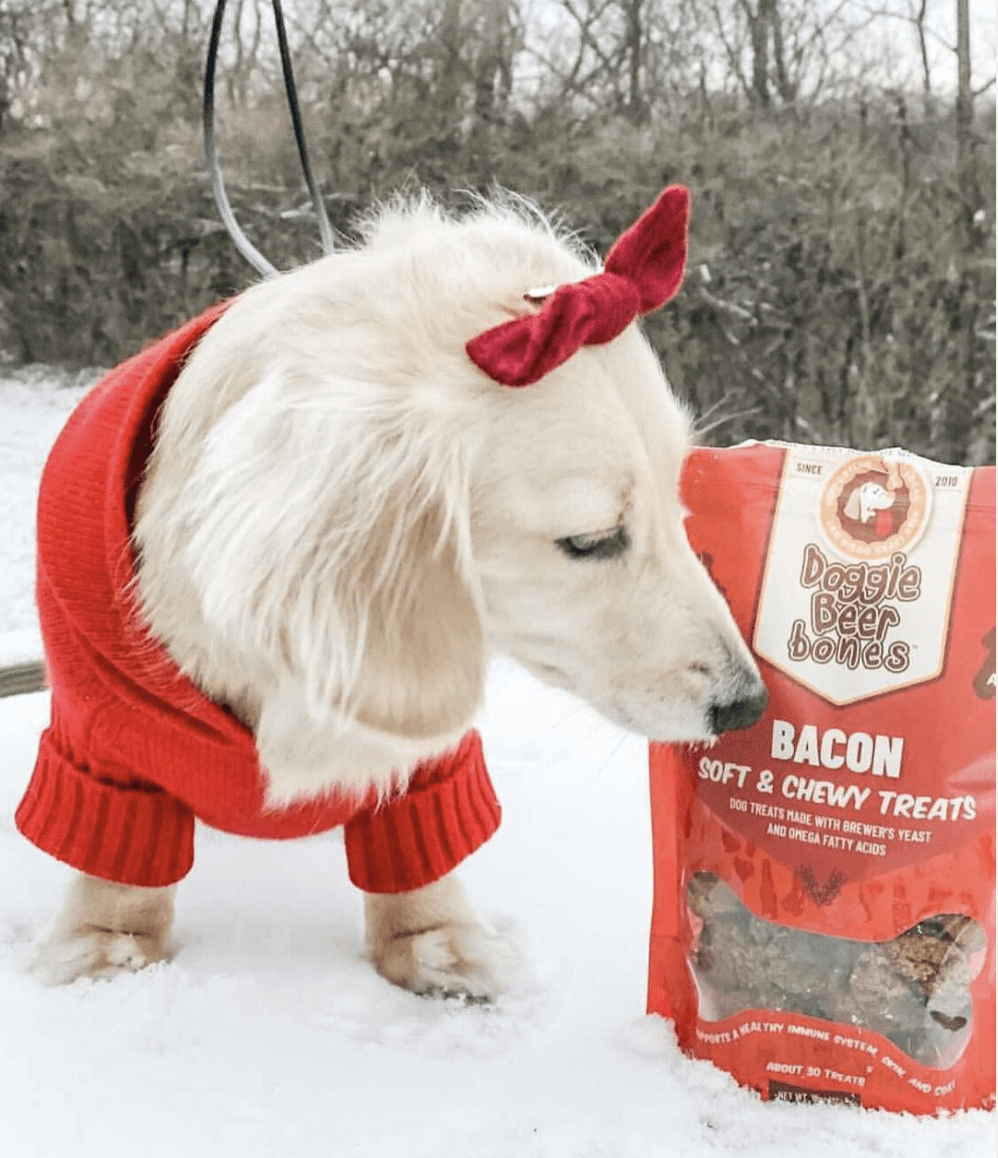
Outside activities help keep dogs happy and healthy.
Don’t forget to stock up on treats for your indoor fun. Take 30% off wit our Peanut Butter Bundle where you can combine any bag of treats paired with our CBD Infused Peanut Butter! Whether your dog loves soft-baked or crunchy treats, we have something tasty for every dog.


